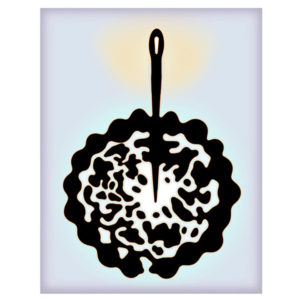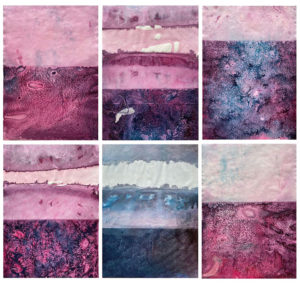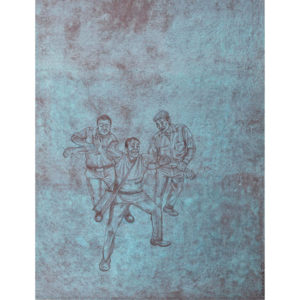Even as the Coronavirus forces the world to live with the ‘new normal’, artists are making the most of the situation by representing the changing times in their work
“Covid-19 is set to alter us all in untold ways. It’s a paradigm-shifting event that divides lives and cultures into a before and after,” says artist Aditi Singh.
Giving us a look of this ‘before and after’ pandemic scene and its imprint on canvases, gallery Chemould Prescott Road has put together an exhibition.
Titled ‘Out-site/ Insight’ this exhibition provides a glimpse of what artists are doing in this time of isolation. While several are unable to make art – using their time to read, watch films, others have shared works which show their response to their forced isolation. These works speak of and to this time.
“The selection, therefore, is of works that are made in this moment of lockdown, and of others that speak of isolation regardless of lockdowns. It is indeed true that artists are actually solitary creatures by nature. It was interesting to approach an existing inventory that looked at that silence that artists usually work in, juxtaposed with those works that come out of the forced isolation,” says Shireen Gandhy, director of Chemould Prescott Road.

This ongoing exhibition is a part of IN TOUCH, a digital exhibitions platform created in partnership between 10 galleries in India and Dubai to present online exhibitions.
Keeping in mind the contrast in works that were created during and prior to this lockdown, Singh says, “We will emerge changed, though how those changes will manifest remains uncertain.”
Singh’s work on the horizon line is a collage of paintings. “I tend to think of landscapes as affecting us most strongly when we are in them, but there are also landscapes we bear with us in absentia, those spaces that live on in memory long after they have withdrawn in actuality. The horizon line first appeared in my work in 2012, after the sudden death of a family member,” says Singh.
Drawing a line every day thereafter has become an act of remembrance and an act of hope for her. “Of acknowledging the abundance around us that continues to shimmer, and the human spirit that rises despite the loss,” adds Singh.

Another series of work that has emerged from a loss and has been juxtaposed with current works is artist Dhruvi Acharya’s work. When Acharya emerged from the tragic passing away of her husband, Manish in 2011, the works in the exhibition: ‘After the Fall’ (in 2016), that spoke directly about extracting herself out of the loneliness of that time took shape. The work included here, titled, ‘Afloat’ – literally speaks of that moment of aloneness, yet that moment of strength – of emerging out of despair (metaphorically) floating above sea-level.
Coming back to the current year, Varunika Saraf’s works refers to 2020 as a year that has “already unleashed tremendous misery. My recent work engages with the idea of ‘miasma’ or ‘bad air’, specifically the miasma of violence,”
Saraf feels that it is imperative now, more than ever, to continue this ongoing work which attempts to develop a discourse on the exponential rise of violence and traces its historical roots.
“Apart from the social fallout that we are witnessing, there is a real danger of societies sliding towards authoritarianism in the wake of the present crisis. The current situation provides more excuses to silence dissent and can lead to increased consolidation of power. It has already served as a backdrop by some to further communalise the society. I, therefore, continue my work with a renewed sense of urgency,” adds Saraf.
Talking about more urgent matters, artist NS Harsha’s sculptures put the emphasis on food. One of his works showcases an honest, meaningful, simple, yet profound relationship of a human being with food. Resplendent in bronze, the protagonist is seen delightfully engrossed in eating his meal served on a plantain leaf.

This work was completed in 2019. However, when one looks at it in context to today’s lockdown where food has become scarce for a large section of society – this gentle celebration of absorption in a meal gathers new meaning.
While artists are creating works, some are yet to see its final look after the end of the ongoing pandemic. Artist Anant Joshi goes back to the drawing board. He starts with making rudimentary drawings using pencils and markers, then scans them into a digital image, further developing them into symbols that you see on your screen. While the image is digitally complete, the final product will be realised only post lockdown when the artist would be able to decide the medium of execution.
This could be either a silk-screen or linoleum cut or possibly another relevant medium. The size would also be subject to the final realisation of the work.
The exhibition is on display in the website of Art In Touch
(Cover: N S Harsha sculpture)





